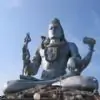Chitragupta ji and the Origin of Kayasthas
Shree Chitra Guptay Namah:
WHO are Kayasthas and what is their origin? Just as the Kshatriyas worship their arms and weapons on the occasion of Dasehra and the Vaishyas take out their bahis (cash-books) and khatas (ledgers) and venerate them on Divali, the Kayasthas, too, reverently place a pen and an ink-pot before their founder and patron deity Chitragupta on dooj (the 2nd day in the phase of the waxing moon), after Divali. They invoke his blessings to give them strength through the pen, considered mightier than the sword.
But where do the Kayasthas or the writing caste fit in the four-fold varna system of the Hindus?
It is said that Brahma, the Creator, having established the four varnas — Brahmin, Kshatriya, Vaishya and Shudra — ordained Dharamraj ( also called Yamraj, the god of death) to keep record of the deeds — good and evil — of all life-forms born and yet to be born on the earth, in the heavens above and in the lands below. Dharamraj, however, complained, "O Lord, how can I alone keep record of the deeds of the beings born into 84 lakh yonis (life-forms) in the three worlds?"
Brahma then closed his eyes, meditated for a while and lo and behold! there appeared a radiant figure with a quill-pen in one hand and an ink-pot in another. Brahma named him Chittagupta for he was conceived in his cognitive-self (chitta) and he was lying in Him, dormant and secret (gupta). He was born of Brahma's body (kaya) and so the Lord decreed that his progenies be called Kayasthas. He was assigned to work as a minister, to write and record for Dharamraj. Thus, the fifth varna, the Kayastha, came into existence.
Sanskrit texts of yore tell us that Chittagupta married Irawati and Nandini. The 12 Kayastha sub-castes are traced to his 12 sons, eight by Irawati and four by Nandini. Mathurs, Gaurs, Bhatnagars, Saxenas, Ambhasths, Nigams, Karns and Kulshreshths became the descendants of the eight sons by Irawati, whereas Srivastavas, Suryadhwajs, Asthanas and Valmiks became the descendants of the four sons by Nandini. As time passed, the name Chittagupta got transformed into Chitragupta.
Some historians hold the view that during the reign of the Mughals, a number of Hindus who were were educated and endowed with sharp intellect attained administrative positions through rapid adaptation to the Persian language and culture of India's new rulers. These influential Hindus got together and formed a new caste known as Kayastha.
Ancient Sanskrit texts dating back to the pre-Mughal period, though, have references to Kayasthas and Chitragupta. The Smriti of Yajnavalkya describes the Kayasthas as writers, scribes and village accountants. The Vishnu and Parashara Smritis have also similar references to them.



























